
In Johannesburg
Services in Johannesburg
- Cholesterol and You
- Motivational Speaking
- Soweto
- Rubble Removal
- Bee Removals
- Furniture Removals
- Storage on East Rand
- Document Storage
- Photographers
- Photography
- Antiques
- Chocolate Fountain Hire
- Chimney Cleaning in Johannesburg
- Skip Hire
- Debt Wise
- Bookkeeping
- Don't get left in the dark
- World Class City
- 3D Printing
- Accounting
- The Sweet and Snack Expo
- Molex
- Women in Construction
- Vintage Style
- Hydraulics
- Security
- Industry
- Team Building
Products in Johannesburg
Life in Johannesburg
- Your Weekend
- Kyalami Kart Circuit
- Alive and Well in Johannesburg
- Belly-dancing
- Sparrow Village
- Randpark Ridge
- Soweto Tours
- Northcliff
- Ferndale
- Bee Story
- The Battle of the Service Providers
- Johannesburg - West and South
- Building in Johannesburg
- Parkhurst
Building in Johannesburg
Article published on September 22 2014
Roof building and Roof repair
Once the brick side of things is finished it is time to make sure your new building has a new roof or at least that the roof that is on an existing building is in good repair.
One might think it a fairly obvious thing to have a roof which is not damaged or missing any tiles, but often damage suffered by a roof can affect other parts of the structure, not just the most visible. There are certain components that need to be kept in good shape in order to ensure that your roof does not collapse or blow away in the next fierce wind.
Roof trusses:
Usually made of wood and put together with steel fasteners, roof trusses are treated to withstand water and decay. Special care is taken to ensure that all the fastenings are in place and of good quality and and the treatment the wood receives should be of the type to withstand the elements and be long lasting.
Fascia Boards:
Used in conjunction with waterproofing and decay preventive material, fascia boards and barge boards have the dual purpose of protecting the roof trusses from intrusive elements such as water and providing the house with a finished appearance.
Fascia boards are placed around the house behind the guttering but before any part of the roof support. This allows it to act as a break between rain water and exposed wood, thus acting as a second layer of protection for the roof trusses. Fascia boards also keep vermin and birds from seeking shelter inside the roof where they can cause untold damage.
Usually made to withstand alot of wear and tear replacing and repairing fascia boards can be done relatively quickly and without too much disruption to the home.
Article published on June 25 2014
Types of bricks
- Dry pressed bricks
- Extruded bricks
Clay bricks and the features that differentiate them from each other
What influences the colour of clay bricks?
The colour of clay bricks is influenced by the chemical and mineral content of the clay as well as the firing temperature. A high iron content in the clay will leave the bricks with a pink tinge, most clay bricks also burn to various shades of red and the temperature in the kiln will deepen the shade of the brick.
To get a good idea of all the different colours of bricks that are out there take a look at some of the samples by clicking here.
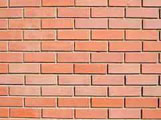
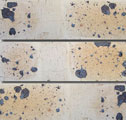
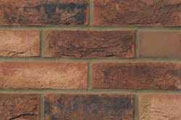
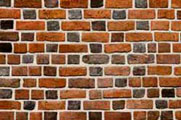
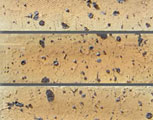
Terms given to the different ways of laying bricks.
Stretcher – This is when a brick is laid flat and the long, narrow side is exposed
Shiner – When the brick is placed on it's side and the broad surface is visible.
Header – When the brick is laid flat and the small side faces the outside surface of the wall.
Rowlock – This is when the brick is on it's side and the small end of the brick is visible
Sailor – The brick is stood upright on it's small end with the largest surface facing out.
Soldier – Similar to Sailor except that the brick is turned, exposing the narrow side.
Laying the bricks in the various manners and alternating the different edges of the bricks allows for a pattern to be worked into the wall. Bricks can also be laid in the various formations to alter the strength or other technical aspects of the wall.
What are the other types of bricksArticle published on May 6 2014
Planning on building something?
There's more to building than just laying a few bricks. If you want your new structure to be solid and also legal, you need to plan the entire project from start to finish. It's a good idea to make a list of all the aspects of the project and action then as they arise. Once you've made your list, give it to someone who has been through the process before and ask them to check if you have left anything out.Once you have decided that you need something built and that you are going to build it yourself you will need to have a look at the following things.
Budget
Find out what the prices are for the various components you will need to build you structure. Allocate a budget for the entire building project and divide it up as required.Make use of your building plan and the advice of one of the calculators on the internet to assist you with the right quantities, or if you are tackling a large project a quantity surveyor will be able to advise you on quantities of building material needed and also assist in cost calculations for your project.
Permissions and approvals
Zoning rights are one of the considerations to take when you plan to build. Certain areas are zoned for certain activities e.g. business, restaurant, residential, educational, religion etc. The town council has zoned the areas in a way that will prevent infringement of rights when these different zones operate. One would not like to have a retail business next to your home etc.
Permissions or approval of plans also take into account the safety of the eventual occupants. Read more about building permissions and download the relevant forms for building permission.
Components
The structure you are building will eventually be the sum of all its parts. You want to buy the best quality you can afford which will allow you to complete your project timeously and affordably.
You need to look at the equipment that you will need and whether it needs to be bought or hired. This includes everything from a wheel barrow and trowel to a bulldozer if neccesary.
Then there is the ever important bricks and cement. Choosing quality bricks which are suitable for your project is important if you want your structure to stand for a reasonable period of time.
There are various brick suppliers around the country, all of whom have websites and are contactable by telephone, you can also visit the premises if you require. (Good idea, especially for first time builders).
Since bricks are the chief building material in a building project it would certainly pay you to do your research. Take some time and visit a brick yard or do seome internet research. Logibrik are suppliers of bricks, visit their website logibrik.co.za and learn a bit more about the different types of bricks.
Stay on Plan
It is important to set out your plan and stick to it as closely as possible. It happens that people find themselves running over budget as a result of the building taking too long or opting for something different than origionally decided on, causing the project to be delayed.
Remeber that safety is a big part of your project and adhering to safety requirements will go a long way towards having your plans approved.
There will be factors that influnce the time in which your project will be completed but you can manage these setbacks by making allowances for unforseen delays in the initial planning structure.
Join Us
We want to build a shed or storage space for large amounts of firewood. it is not a complicated project but it will definitely highlight some of the things which have been discussed. Let's see if we can stay on track. Hopefully you can learn from our adventure.
The first thing we have to do is draw up a plan and get permission to build our wood shed.
Having a plan will assist the building inspector in his decidision to grant us permission to go ahead with the building.
A plan will also help us determine how much building material we willneed to complete the project. We won't be using a quantity surveyor because of the size of our building project but rather make use of a calculator we found elsewhere on the internet. The one we found on this website brickwarehouse.co.za suited us perfectly.
Once we have our plan and our quantities we can continue with sourcing a supplier for our building materials.
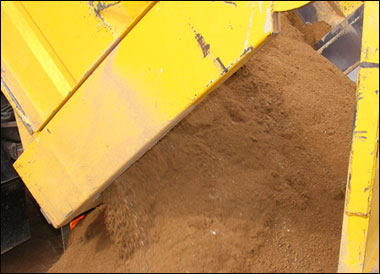


Get started
So the plans have been approved, we have had our building materials delivered and we even have a building crew.
Monday morning
Our building crew arrived early on Monday morning with their equipment and were ready to start building.
The outer wall of our wood store will replace an existing wall so there had to be a bit of clearing before the builders could start with the wall. The foundation ditch for the wall was dug in record time and by lunch time there was som considerable progress. Granted you don't want the builders to rush through the project and do shoddy work, so we made sure to checkthat the quality of the build was on a par with the speed at which it was happening.
After a bit of amateur building inspection we agree that the first part of the wall is coming along rather nicely and we leave the crew to get on with it.
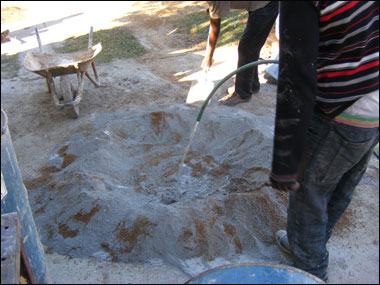
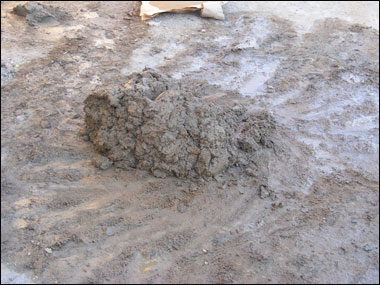
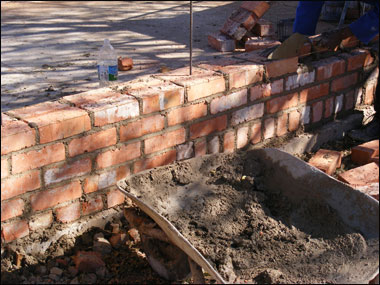
It looks as if the building will be completed a day or two sooner than we expected it to be. This is generally a good thing because running out of time and taking longer to build than you had origionally planned for can be devastating to a budget.
There appear to be quite a few bricks left.
We did factor in at least ten percent to make sure that any breakages are covered but the delivery guys did not throw any of the materials from the vehicle and in spite of not having a fork lift did not dump the bricks onto the ground but rather packed them neatly; saving alot of bricks and ensuring we had enough to complete our project.
Bricks do break and this should be taken into account when placing your order but you can prevent too much breakage by being present at delivery or having a responsible person on site when delivery of any building material takes place.
You can also make sure that you order the building materials in the correct quantities for your project.
What happens once the walls are finished?
Our building is done. The walls for our wood shed are complete all that is left is for us to put on a roof for keeping out the rain and once that is done we will need to have the out walls plastered and painted so the th new building blends in with the existing surroundings. There are a few companies around Johannesburg that specialise in building and revamping existing structures. There are a few town-house complexes which have had just that kind of face lift and they look as if they are completely new. Aflink services are just such a company. The will be able to make our new building blend in wonderfully and even thogh we dont require a ceiling at this stage, they are able to meet our needs in that regard, so if we ever change our minds about what we are using this room for we will be giving Aflink a call.
But Johannesburg, or my backyard are not the only places that are being built on at this point. There are places of growth all over South Africa that will need alot of planning to succeed. The end result will be an improved economy. A prime example is Medupi, where the new powerstation is being built.